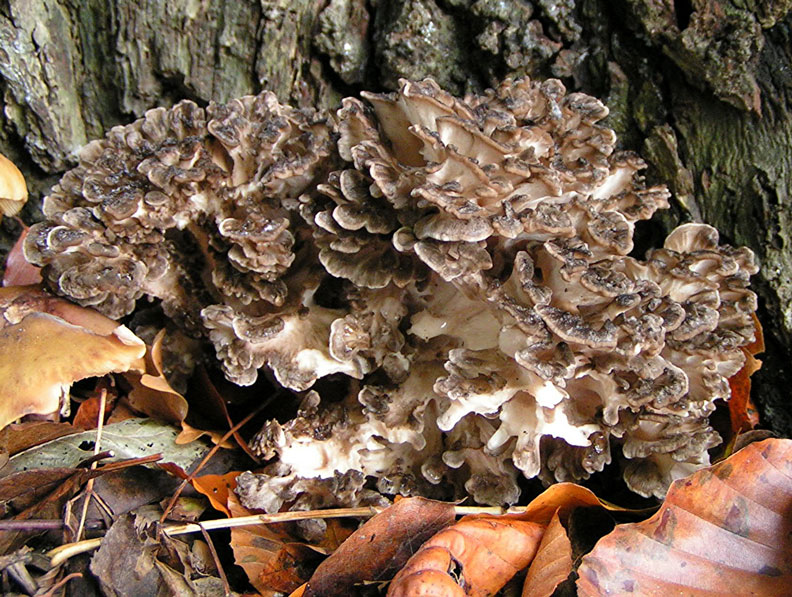
We discussed the use of fish oil in the last column, and how important it is to give an adequate dosage in order for your pet to actually improve on fish oil. Now I want to discuss several other nutraceuticals that you may be interested in knowing about for your pet’s sake.
The basic, most important nutraceuticals to consider giving your pet on a daily or regular basis, after fish oil, which is extremely important and for which there are reams of data supporting its use, would be the following:
The Five Most Important Nutraceuticals to Give your Pet
- Fish oil fatty acids (EPA+DHA)
- Beneficial bacteria (Probiotics)
- Antioxidants (many choices)
- Medical Mushrooms (many choices)
- Detoxifying Agents (Milk thistle and Turmeric)
Beneficial bacteria such as the lactobacillus bacteria acidophilus and bifidum help to maintain a healthy ecology in your gastrointestinal tract. There are more bacteria in yours or your dog’s gastrointestinal tract than there are cells in their entire body! This biomass of bacteria are essential to maintain daily health and to protect against invading pathogens. Probiotics are considered to be better when they contain multiple strains of bacteria or yeast, in large enough counts to be able to inoculate a pet or yourself with billions of active live cultures. Its important that these live cultures be able to survive stomach acid and bile acids so as to be able to then colonize the bowel after successfully transiting these areas of low pH in the bowel.
Probiotics can help with the diarrhea caused by antibiotics, and have been shown to have an immune supportive role in the body, helping the body to develop tolerance to benign substances versus developing hypersensitivity toward substances that are benign and which do not pose a risk to the body’s health. For this reason probiotics can be used in allergic patients, and can also help the body to repair its increased intestinal permeability or Leaky Gut. The bacterial will cover the area of the bowel that needs repair, to protect it while it self-repairs.
Antioxidants can be derived from pharmaceutical extracts such as d alpha tocopherol, or sodium ascorbate (vitamin C) or they can be made from plants, fruits and/or vegetables. Each source has a different application, some of the pharmaceutical antioxidants can be used by injection or intravenously, as well. It is generally thought that the plant-based antioxidants are a bit safer than the pharmaceutical antioxidants, and in cases of chemotherapy, are much less likely to interfere with clinical outcomes.
Free radicals, or reactive oxidative species (ROS) are the molecules with ends that have a free ionic bond that can tear away side groups from another molecule resulting in oxidative damage to that molecule. ROS can also create oxidative damage to the tissues. Some cells of the body produce ROS as a normal part of their day to day activity. For instance some white blood cells will kill pathogenic bacteria using hydrogen peroxide.
You don’t want to give so many antioxidants that they neutralize the ROS produced by the white blood cells. However, at the same time, during the liver’s detoxification of toxins and drugs in the body, it produces even more toxic side effects at the same time as it releases copious free radicals. The use of antioxidants can help to improve the rate of liver detoxification and reduce the damage to the liver from these free radicals released during normal liver detoxification.
Good antioxidants to consider for daily use include silymarin from Milk Thistle, which will help to detoxify at the same time as it quenches the free radicals in the liver. Another good antioxidant to consider is cranberry. Not only is this berry considered to be good for bladder infections, its is also a stellar antioxidant, with great benefit to the tissues for any reason. There are some studies that show it to be helpful even with cancer!
Medical Mushrooms are just now beginning to gain the position they have deserved for a long time as a “Super Food” “Super Nutraceutical.” Containing high amounts of beta glucans, which are some of the oldest and strongest immune enhancing agents in the world, they also contain a precursor for Vitamin D2 and a variety of organic acids and other beneficial compounds all of which allow mushrooms to provide powerful immune support. Recently a study at the University of Pennsylvania found that a specific mushroom extract allowed these dogs with splenic cancer to live longer than they historically would live if they had received chemotherapy.
There are a variety of different mushrooms, and each mushroom has its one specific effects. Some better for infections, some better for cancer or immune disease. In general it seems like using a shotgun approach with multiple mushrooms produces the best effect, as compared to just using a single mushroom at a time.
Mushrooms need to be properly identified because there are some poisonous mushrooms that look very similar to their non-poisonous cousins. Be careful if you are trying to identify mushrooms in the wild. Mistakes can happen, and poisonous, potentially lethal mushrooms can be ingested innocently, resulting in liver liquefaction and a miserable death. So please DO be careful! It is generally considered that mushrooms need to be steam or hot water activated in order to release their full benefit.
Detoxifying Agents such as milk thistle extract and N acetyl cysteine (NAC) also have antioxidant properties, and should be a regular part of both yours and your pet’s daily supplement protocol. Silymarin is a good quality liver detoxicant, antioxidant with anti-neoplastic characteristics. It also gently causes the gall bladder to contract, and thins the bile as well, so it is well suited to address gall bladder sludge and other issues with the bile and gall bladder. Although not as well absorbed as the phosphatidylcholine-bound silibinin, it is less expensive, and when higher doses of silymarin are given, enough is absorbed for good clinical effectiveness. Silymarin will also help improve appetite because of its influence on peristalsis, and has been shown to have a preventative benefit with cancer.
NAC is the standard to which SAMe is compared. It is used as an intravenous agent in the ER for acetaminophen toxicity, and can be provided as an injectable by a compounding pharmacy for your pancreatitis patients. It has been found to be renoprotective in situations where a reno-toxic such as cisplatin is being used to treat cancer. Whey protein powder contains the amino acid cysteine, which is a direct precursor to glutathione, the liver’s most potent antioxidant. Cysteine cannot be isolated from Whey protein and put into a capsule. For your pet to receive the benefit of the cysteine you have to ingest the whole whey powder as an antioxidant and source of protein. Otherwise, if you want this antioxidant in a capsule or a tablet, you will need to take the NAC in that format. They each work well in either format.
Future blogs will go into greater depth and detail on many important nutraceuticals. If there is a specific nutraceutical you would like Dr. Silver to write up a blog on, then please leave your suggestions on these blogs.
Thanks!




